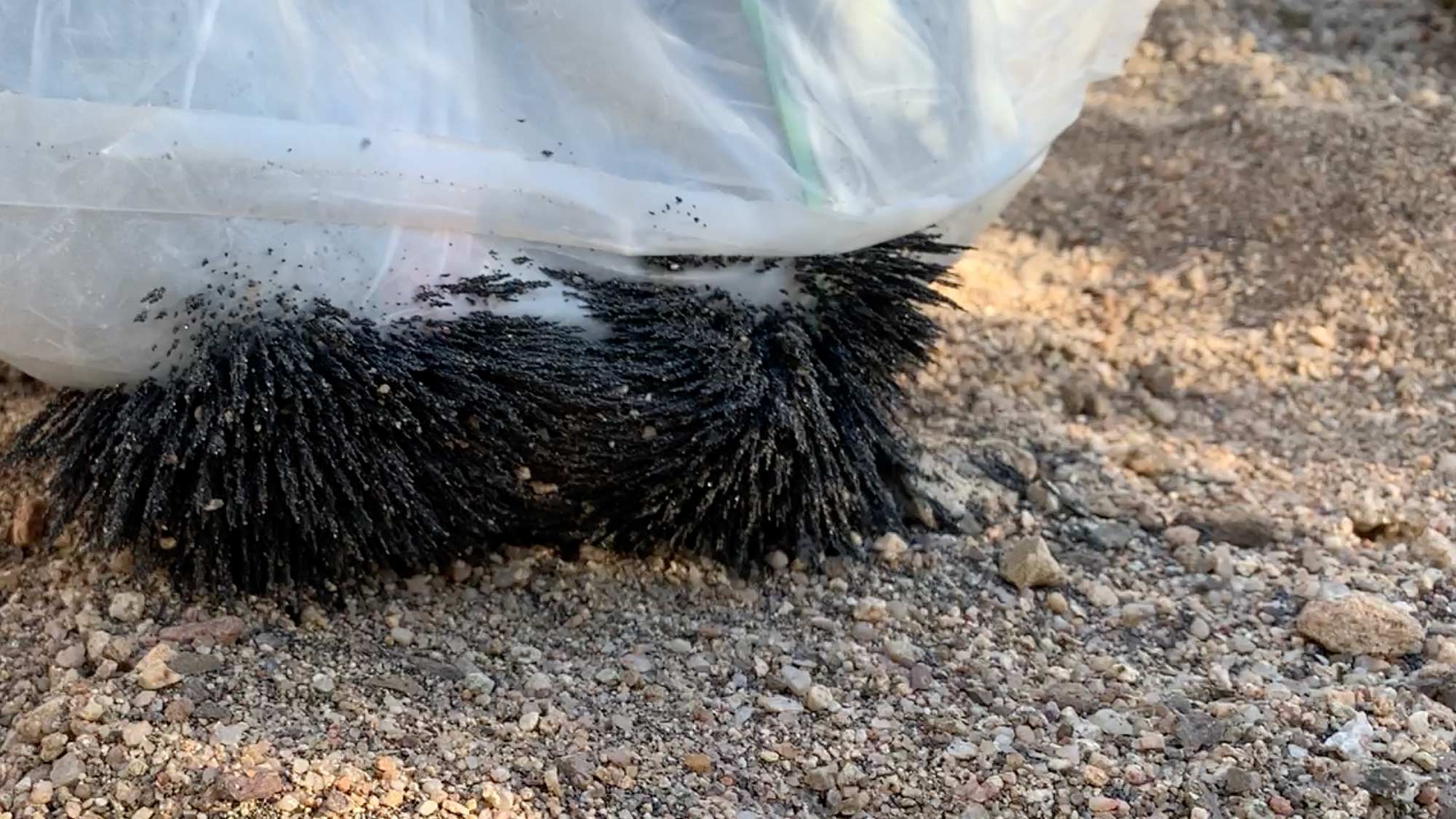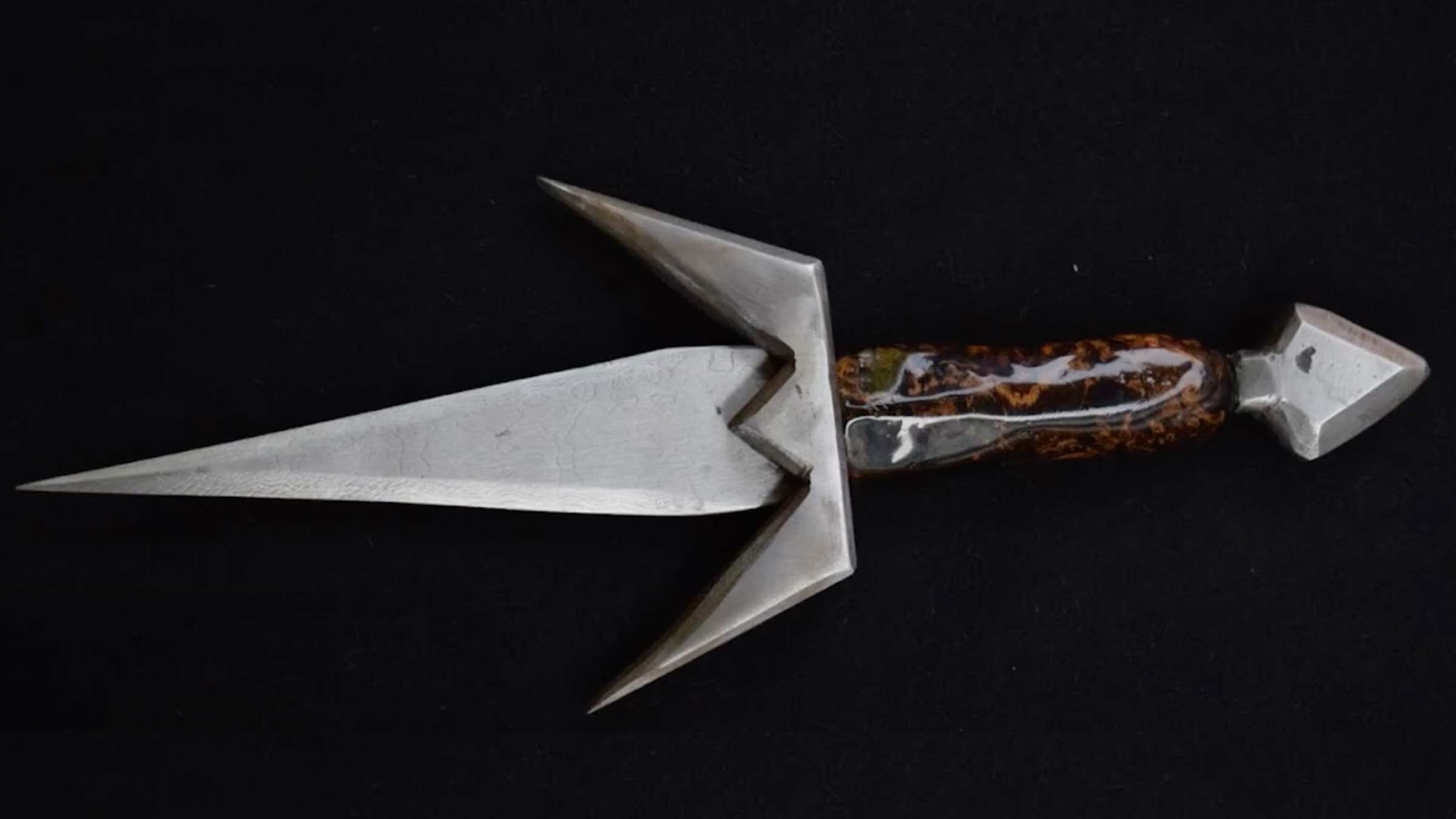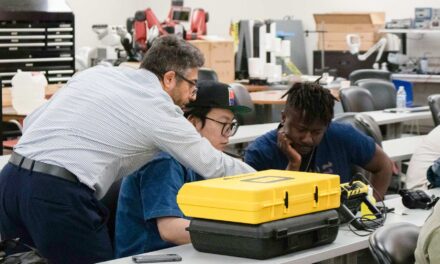
ASU students forge award-winning blade with local materials

It’s a day like any other. Your classmate turns to you and asks “Do you want to make a sword?”
For materials science and engineering majors Brian Ridenour, Quinlin Meyer, Julia Greteman and Carsen Cartledge, the answer is an enthusiastic yes.
Brian Ridenour, the team’s leader and a junior in the Ira A. Fulton Schools of Engineering at Arizona State University, discovered the Minerals, Metals and Materials Society’s Bladesmithing competition just months before it set to take place. The competition is held every other year to allow students as much time as possible to develop their blades, which can be a lengthy process.
The team was the first from ASU to compete, which caught the attention of their advisor, Associate Professor Sefaattin Tongay, chair of the undergraduate materials science and engineering program in the School for Engineering of Matter, Transport and Energy, one of the seven Fulton Schools at ASU.
“I cannot express enough how impressed I was with the entire team,” Tongay says. “They have taken very creative approaches, worked hard, networked with local industry experts, and used all the infrastructure ASU can offer to execute their plans.”

The students’ completed blade made with locally sourced iron and a handle of palm cast in maroon and gold resin.
It was the team’s ingenuity that won them the Creative Use of Materials Award for their use of magnetite — a mineral made primarily of iron oxide — they sourced themselves in the Arizona desert, while other groups purchased stock steel material. It’s an especially meaningful award for students studying materials science and engineering, a field focused on innovating materials used in manufacturing.
Of course, trailblazing is no easy task. After leveraging their materials science and engineering connections, the group came in contact with Michael Sobrado, a laboratory manager in the School of Biological and Health Systems Engineering, another one of the Fulton Schools. Sobrado offered a few of his connections in industry and his fully equipped metal fabrication and blacksmith shop, Dragonforge Ironworks.
“I was very impressed with how tenacious the team was in learning a new and difficult trade,” Sobrado says.
Greteman, a materials science and engineering junior, was excited to find that these professionals were eager to share their expertise.
“You find older masters in the field who want to share this information because they don’t want it to all just go away,” Greteman says.
It was one of these masters in the field who showed the students a wash north of Tucson where they could find a magnetite deposit. Many hours later, with 60 pounds of material in hand, it was time for the students to begin composition. Materials analysis proved the magnetite contained enough iron to forge. Next their task was to turn the magnetite-rich sand into steel. Even with the help of experts, the process was not an easy one.
“It’s interesting to see the theoretical side and what we expect to happen versus the reality where there’s a big gap where we don’t know anything about making it work,” says Cartledge, a materials science and engineering sophomore.
After layering their magnetite sand between strips of steel and hammering it into shape, the blade was milled and ground down to the appropriate size. The group then turned their focus to the blade’s handle.
Not only was the material for the blade sourced in Arizona, the handle was made from one of the Phoenix area’s quintessential plants: the palm. Though the substance isn’t reliably sturdy, Cartledge researched ways to work with the material.
“Palm is a grass, so nobody likes to use it for anything. It’s difficult to work with. It just falls apart,” Cartledge says. “We found out you can stabilize wood using resin in a vacuum chamber. Then we can set it in epoxy.”
Once the blade was inserted into the handle — which was adorned with maroon and gold epoxy to represent ASU’s signature colors — their project was complete. Before the team even won the award, the students felt a great sense of accomplishment at seeing the project through from start to finish.
Ridenour says the project tested his entrepreneurial spirit and ability to maintain his composure in the literal heat of the moment.
“My core takeaway from this competition was the experience of starting something — putting together a team and figuring out the scheduling, the planning and the execution,” Ridenour says. “There were a lot of points where it was easy to get caught up in what else we needed to do, but we just took a step back and did the direct next task to the direct next task. And then, eventually, it all came together.”
All the team members expressed gratitude for the hands-on experience.
“It was cool to be able to make something and have a final product that you knew why it behaved the way it did,” Greteman says. “It was a great experience to be able to work with metals, because normally we’re just learning about them in a theoretical sense and we don’t interact with them as much.”
Now that they have blazed the trail, other undergraduate students are eager to participate in the next 2024.
“We definitely want to have a competing team each year and have it be something within the materials science and engineering department,” Greteman. “Our professors have already created a space on their wall where they want this sword to be in our undergraduate laboratory hung up with our poster and everything. So, they’re very invested in making the bladesmithing competition a lasting tradition.”


































